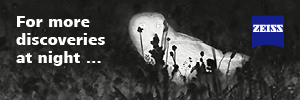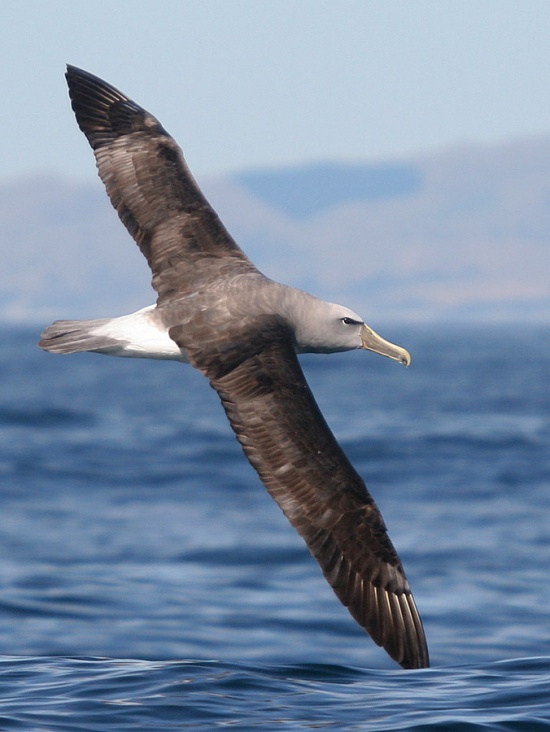Alternative name: Salvin's Mollymawk; Grey-backed Albatross
- Thalassarche salvini
Diomedea salvini
Identification
- Grey head, mantle and back
- Dark grey to black back, upperwing and tail
- White rump and underside
Light grey legs, feet
- Grey beak
- Pale yellow upper ridge to the upper mandible
- Dark spot at the tip of the lower bill
Distribution
The Crozet Islands in the Indian Ocean and the Bounty Islands and The Snares to the south of New Zealand.
Taxonomy
Subspecies
This is a monotypic species[1].
Diomedea vs. Thalassarche
Genera Phoebastria and Thalassarche formerly placed in the Diomedea, but now considered by virtually all authorities (Clements, Howard & Moore, AOU, BOU, SACC) to be separate genera in light of Nunn et al. (1996) and Penhallurick & Wink (2004). Often considered conspecific with Shy Albatross.
Habitat
Barren and rocky islands, and otherwise the open oceans.
Behaviour
Breeding
One egg is laid in early October and is incubated by both parents until early November. After a further 4 months, the chick fledges.
Diet
The diet consists mostly of fish and squid.
References
- Clements, J. F., P. C. Rasmussen, T. S. Schulenberg, M. J. Iliff, T. A. Fredericks, J. A. Gerbracht, D. Lepage, A. Spencer, S. M. Billerman, B. L. Sullivan, and C. L. Wood. 2023. The eBird/Clements checklist of Birds of the World: v2023. Downloaded from https://www.birds.cornell.edu/clementschecklist/download/
Recommended Citation
- BirdForum Opus contributors. (2024) Salvin's Albatross. In: BirdForum, the forum for wild birds and birding. Retrieved 27 July 2024 from https://www.birdforum.net/opus/Salvin%27s_Albatross
External Links
GSearch checked for 2020 platform.1




